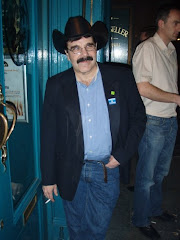Republican Politics, American Style
Published on March 12th in Metro Éireann By Charles Laffiteau
A couple of weeks ago I suggested that the US and other governments take possession of their banks “toxic assets” so that those banks could go back to private investors and raise fresh capital that they could start lending again with a clean set of books. To reduce the cost to taxpayers I also suggested that those governments could get warrants when they acquire toxic assets that would convert to bank stock the governments could sell to private investors, and hire private equity managers to oversee the valuations and disposal of those “toxic assets” to ensure that they’re sold only when the time is right.
Well it now appears that the US government is going to pursue a hybridized version of what I suggested. Instead of taking these “toxic assets” off the books of the banks and creating a “bad bank” to hold and dispose of them, President Obama’s economic team is proposing to set up several public-private funds to compete with each other in valuing and buying these bank assets. The basic idea is to attract private investors to both manage and put their own money into these funds with the US government as their partner agreeing to cap their losses and share in the risk of buying these “toxic assets”.
President Obama believes that by competing to buy these “toxic assets”, these new “vulture funds” could establish some more realistic market prices for the “toxic assets” that will allow banks to sell them off. While the Obama administration’s proposal isn’t as clean as what I proposed two weeks ago, I am cautiously optimistic that it might succeed in realizing the same goal; cleaning up the banks books so they can once again begin to raise and subsequently lend new capital to businesses and consumers in the US.
In the meantime I believe the economic situation in the US and the rest of the world will continue to get worse before it begins to get better. There is an old saying that “it’s always darkest before the dawn” and I happen to believe that is the case here as regards the current global recession. But I am now detecting the first glimmers of light at the end of that long tunnel of economic misery the world is now traversing. The first indication that the worst may soon be over will be the bottoming out of the stock market in the United States which may be closer at hand than most people currently think. So why exactly do I believe this might be the case?
Yesterday the US stock market dropped to its lowest level in twelve years, and while it may have a bit further to fall yet, I suspect it is now fairly close to its bottom. That means there are some really good companies with strong balance sheets and excellent future earnings potential available at relatively low stock prices. Savvy investors will begin to buy these stocks now or in the near future while they are cheap which will in turn stabilize the overall stock market.
Note I said stabilize, not reverse, the current downward trend of stock markets around the world. Global stock markets won’t start moving back up again until a majority of private investors become confident that the financial crisis is well on its way to being resolved. Because we are still some months away from being able to predict with any level of confidence that the banks have finally cleaned up their books, I foresee a period of small movements up and down for stock markets over the course of the next year.
The smartest investors are the ones who step in and begin buying stocks or investing when the market in one of these kind of “troughs”. They don’t wait until they are certain the market has bottomed out but instead buy whenever they see weakness in an already down market. They do so because they know that once the majority of other investors regain confidence in the market they will then be competing with them for the best investments and paying a higher price for them as a result of this competition.
The other big components of the current financial meltdown were the collapse of home prices followed by a collapse in consumer spending. Once again, at least in the US, I see the first glimmers of light in both of these areas as well. Consumer spending in the US actually rose a modest .06% in January for the first time following a record six months worth of steady declines. While it may decline again in the coming months I think this is a signal that the downward trend is now over and the US will enter a period of more modest advances and declines in consumer spending during the rest of 2009.
Private investors have now begun moving into the US housing market as they see opportunities to buy homes for roughly 45-50% of the prices they would have paid two years ago before the housing bubble burst. This is a sign that the US housing market has finally reached a bottom and any further declines in home values will be relatively modest. Just like stock prices however, don’t expect home prices to begin rising again until they have spent some months languishing at the low end of the housing market.
Similarly, while US unemployment continues to rise, manufacturing activity in February actually increased for the first time in more than a year. This is a sign that the steady contraction in US business and manufacturing which has been going on since the beginning of 2008 is also coming to an end. Nevertheless, you should expect US economic, employment and spending reports to continue to be pretty dismal for the rest of 2009. But the good news for Ireland and the rest of the world is; just as the US led the world into the current economic recession, so too will the US lead the world out of it.
Wednesday, April 1, 2009
Subscribe to:
Post Comments (Atom)



No comments:
Post a Comment